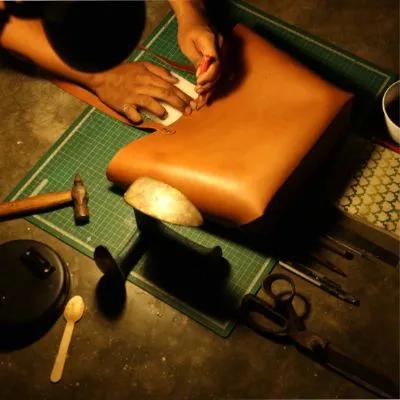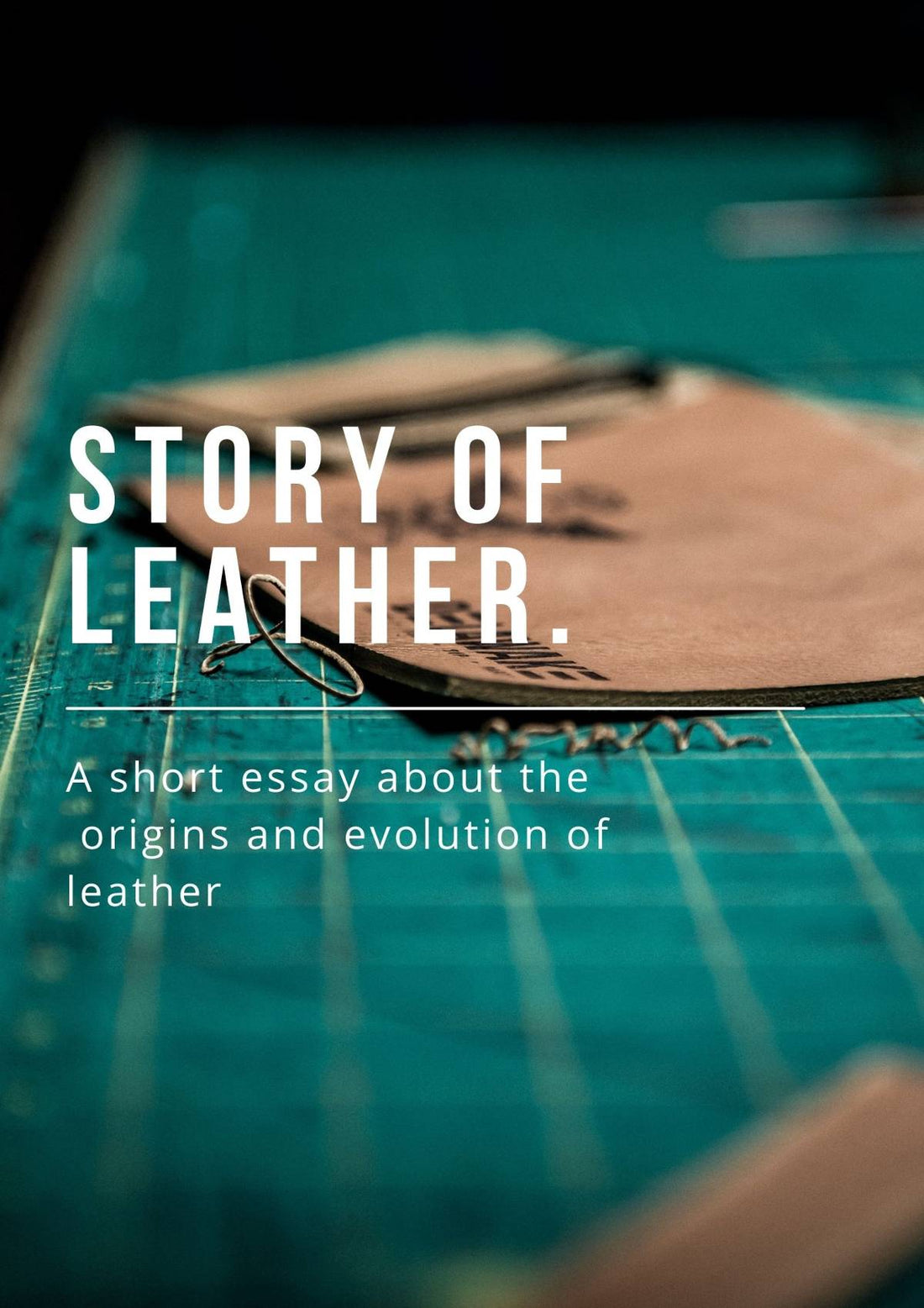The Beginning.
Leather, a material whose relationship with humans has spanned fromthe beginning of civilization 5000 years ago. A silent whisper that continues to echo throughout the history of man and is highly relevant even to this day. Its use and treatment have evolved through many millennia of experiments.
It all started with the skin obtained from hunting and rearing of livestock. The early humans, mostly nomads, would use the hide to cover their feet when walking long distances and make small pouches to carry food. Eventually, when they started settling down into small settlements they started using this hide as clothing and to build shelters until they discovered the techniques of weaving fabric.

The oldest shoe found in a cave in Armenia is said to be over 5500 years old.
The Discovery.
One of the basic problems of using raw-hide was rot. During summer and monsoons, the skin would start rotting early and in winters it would become hard and stiff. This compelled the early users to figure out ways to preserve them and make them softer. These explorations were the first steps in the discovery of the tanning process.
To understand the history of leather it is important to understand what is Tanning (what is tanning). It's the process of treating animal skins and hides with naturally available tannins or through chemicals, altering its properties to extend its life which eventually produces leather.

By Anonymous - Hausbuch der Mendelschen Zwölfbrüderstiftung, Band 2. Nürnberg 1550–1791.
The search for ways to preserve rawhides started during the Stone Age around 8000 years ago. One of the first process used for preserving leather was smoked tanning. After a hunt, all the hair and fat would be removed from the skin using clay. It would then be covered with a mix of animal fat and oils, left to be dried on top of the cooking fire. The smoke from the burning of green leaves released a tanning agent that preserved the hide, converting rawhide into leather. While the fat made it softer and made it water-resistant. These hides were then sewn together with bone needles and grass rope to make a tent-like shelter and eventually the first sails of ships to travel and explore the world.
The Evolution
Before the nineteenth century mainly three types of tanning process existed, animal fat, plant-based and mineral-based. Refined variations of these process are still used today to make leather. The most widely used method is the plant extract-based process called veg-tanning (the process of veg tanning)
A few thousand years later, once humans settled down and major cities began to emerge, the civilizations of early Egypt and Mesopotamia started using the bark of Acacia, or gum arabic for tanning. The first documented evidence of these trials can be found in the Assyrian texts and also in Homers Iliad.
The Romans in 800BCE started using leather from this process as footwear in the form of Sandles. They were also one of the first to use a mineral called Aluta to make the leather soft. This process of tanning is called Alum tanning. Among the ruins of Pompey, there was a tannery was uncovered that used techniques and tools that were used several centuries later.

The tannery excavated and restored at Pompey image credit: laconceria.it
In India, the first recorded use of leather (the story of E.I leather) is from 350 BC when they were used as protective aprons during fights and sheaths for swords. The ancient civilizations in the Indian subcontinent also first processed a type of leather from goatskin known as the "Morocco" today. However, early into the industrial age as the demand and use of leather goods increased chrome tanning (more about chrome tanning) was introduced. It produced much softer leather that was easier to maintain.
Eventually, the method and recipes for this technique would become more complex with time and produced some extraordinary and one of the finest material known to man, Leather.

Leather has been adopted as an object of Luxury
The Legacy.
In the times to come, the use of this material covered a broad range of utility objects. Whenever there was a need for a material that needed to be sturdy and long-lasting. As the use of leather became common, the urge for decoration and colour also rose. That encouraged people to figure out ways to dye and embed motifs as a way to express themselves. The unique styles and craft that developed made leather an exquisite material. Eventually lending itself to many forms of craft and craftsmen. From shoes to saddles, water pouches, sheath, armour, bookbinding, upholstery, gloves, pouches and eventually the one object that raised its stature to a luxurious material, the handbag (history of handbags)

Leather dyeing pits in Morroco, Image courtesy: britanica.com

